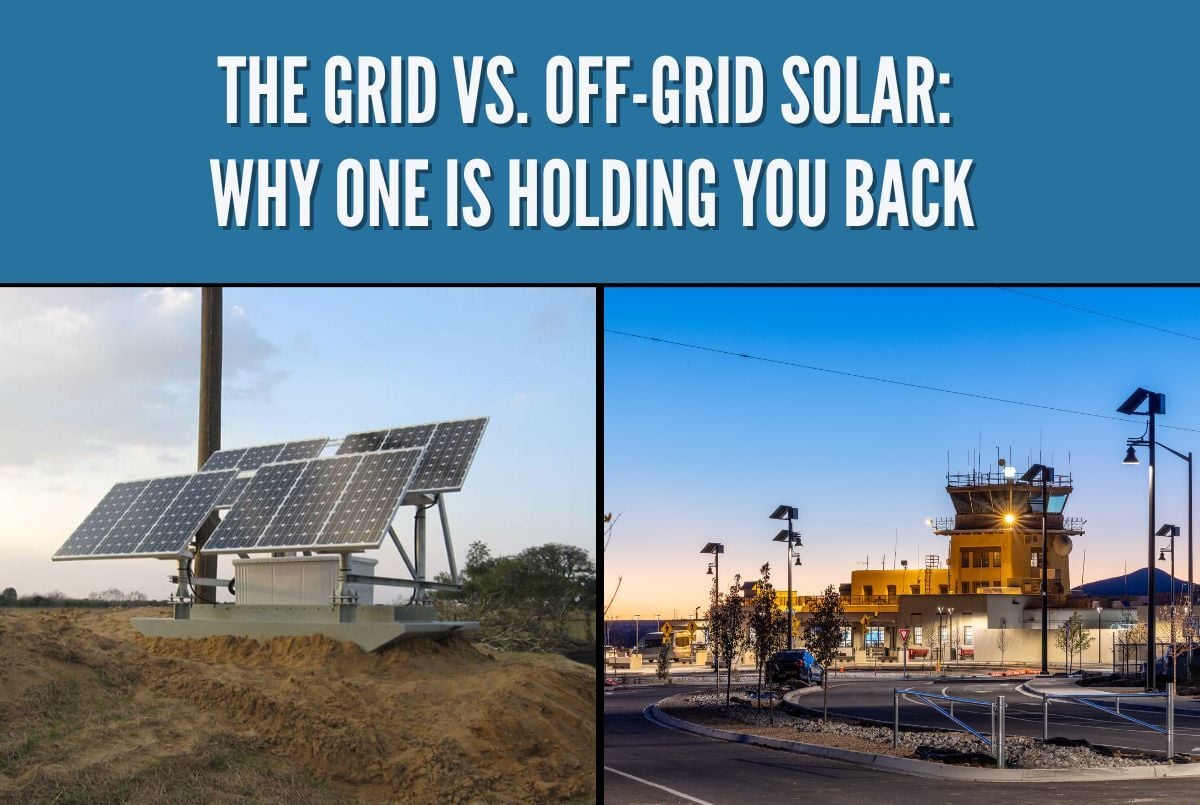


In an era of rising energy costs and climate urgency, off-grid solar systems offer a proven solution for true energy independence, delivering resilience, sustainability, and long-term cost savings. Unlike grid-tied or hybrid setups, standalone off-grid systems eliminate reliance on fossil-fueled utilities while avoiding the inefficiencies and fees imposed by centralized power infrastructure.
This will demonstrate why off-grid solar, when properly designed, provides superior reliability and environmental benefits compared to grid-dependent alternatives, and why compromising with partial grid access undermines its core advantages.
Off-grid solar systems are specifically engineered to eliminate reliance on the traditional power grid, allowing users to avoid not only monthly utility bills but also additional costs like connection fees and demand charges. By generating and storing their own electricity, off-grid users gain full energy independence, shielding themselves from rising utility rates and grid instability.
In contrast, grid extension projects require expensive infrastructure, such as utility poles, transformers, and meters, along with ongoing service fees, which can significantly offset the long-term savings of solar power. Over time, these recurring expenses and infrastructure costs make grid-tied systems less economical compared to self-sufficient off-grid solutions.
A properly sized off-grid system with battery storage can meet energy needs reliably, even during periods of low solar generation or increased demand. Modern battery setups, paired with intelligent energy management systems, ensure stable power delivery while optimizing the lifespan of stored energy. For most remote or self-sufficient applications, this eliminates the need for grid reliance entirely.
Adding grid backup creates unnecessary redundancy, increasing capital expenditure (CAPEX) for underutilized infrastructure. Since off-grid systems are designed to handle peak loads and seasonal variations, a grid connection often serves only as a seldom-used failsafe, one that comes with costly interconnection fees, standby charges, and ongoing service costs. This redundant infrastructure not only raises initial installation expenses but also introduces long-term financial burdens without delivering proportional benefits.
When off-grid solar systems incorporate grid-tied backup, it often creates perverse incentives that undermine their efficiency. Rather than optimizing solar generation and battery storage, users tend to default to more expensive grid power, especially during marginal conditions, which reduces self-consumption of clean energy and increases operating costs.
Hybrid configurations also face financial headwinds, as they typically fall under complex utility tariff structures that may include demand charges, low feed-in rates, or unfavorable net metering policies. These regulatory and billing complexities erode the return on investment that standalone off-grid systems achieve by fully avoiding grid dependence and its associated fees. The result is a system that pays for redundant infrastructure while losing many of solar power's key economic and operational benefits.
Off-grid solar systems are specifically designed to deliver complete energy independence, providing resilience against power outages and aligning with environmental sustainability goals. By operating autonomously, these systems avoid any reliance on centralized grids. Which, especially in regions still dependent on fossil fuels, would reintroduce carbon-intensive energy sources and associated emissions.
Choosing a grid connection, even as backup, fundamentally compromises the system’s sustainability by perpetuating dependence on non-renewable generation. Moreover, it reintroduces vulnerability to utility rate hikes, regulatory changes, and grid instability—factors that off-grid systems are meant to eliminate. True energy sovereignty requires full disconnection from the grid, ensuring that power generation remains clean, self-sufficient, and aligned with long-term sustainability objectives.
The evidence is clear: off-grid solar systems achieve what grid-tied solutions cannot, complete energy sovereignty. By fully disconnecting from utility dependence, users avoid fossil fuel lock-in, unpredictable tariffs, and the wasteful redundancy of hybrid systems.
Modern battery technology now makes 24/7 renewable power viable anywhere, proving that grid extension is an outdated and costly concession. For households and businesses committed to resilience, sustainability, and long-term savings, off-grid solar isn’t just an alternative, it’s the optimal endpoint for energy independence.
